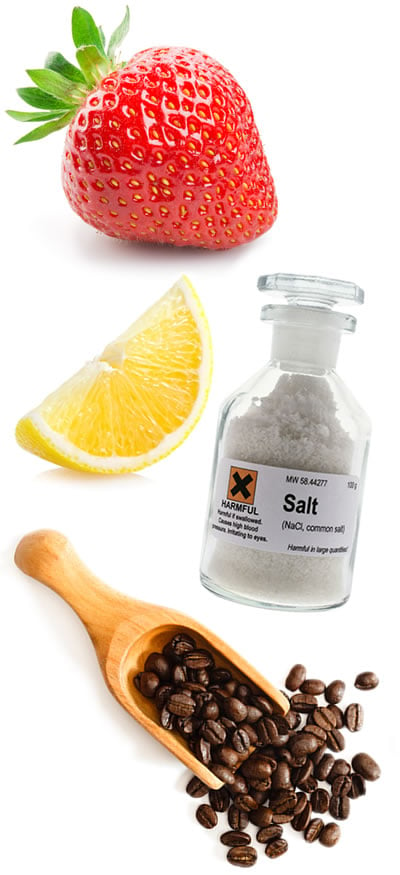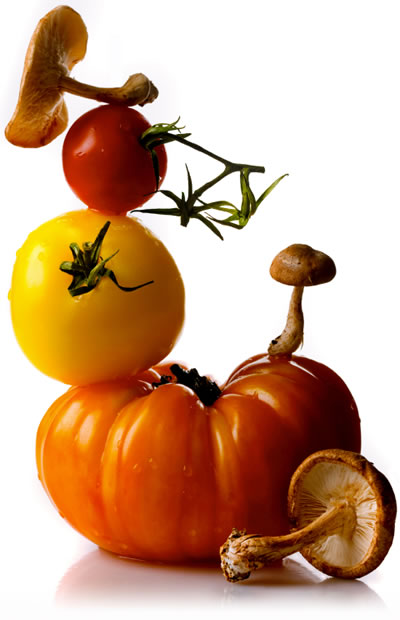The Science of Taste
The science of taste is much more complex than simply flavor alone.

The Five Tastes
The four traditional tastes are sweet, sour, salty and bitter. Yet just after the turn of the millennium in 2002, scientists agreed to recognize a fifth taste – umamni – and it was added to the list of the basic four. It was during the late 1800s that Japanese chemist Kikunae Ikeda discovered this unique and delicious flavor.

 Something new! In 2002, scientists agreed to recognize a fifth taste – umamni – and it was added to the list of the basic four. Tomatoes and mushrooms are examples of foods with natural umami. Today this fifth taste is also referred to as savory.
Something new! In 2002, scientists agreed to recognize a fifth taste – umamni – and it was added to the list of the basic four. Tomatoes and mushrooms are examples of foods with natural umami. Today this fifth taste is also referred to as savory.Science of Taste | Additional Factors
What exactly is taste? In relation strictly to science, the physical and chemical aspects of food create taste. Humans perceive flavor through sensory cells that live inside the 2,000 to 4,000 taste buds on the adult tongue, according to the National Institutes of Health. Each one of these cells has a varying level – 1 through 10 – of sensitivity to each of the basic tastes. Given the 10 levels and thousands of sensory cells, the possibilities for flavors are seemingly endless. But that’s not all.
“An understanding and description of our sensory perception of food requires input from many different scientific disciplines: in addition to the natural and life sciences, human sciences, social sciences, as well as the arts, each contributes their perspective on what we call taste,” Ole Mouritsen, professor of biophysics at the University of Southern Denmark wrote in the BioMed Central Flavour Journal.
Taste is also largely influenced by one’s culture, learning, emotions, and all other human senses. Smell, touch, and even social concepts have an impact on flavor and taste. Memory, perception, and tradition, as well as gastronomy, work in conjunction to create an individual’s experience when taking that first bite of a warm meal, concluded Mouritsen.
The adult tongue has 2,000 to 4,000 taste buds. Taste is also largely influenced by one’s culture, learning, emotion, and all other human senses. Smell, touch, and even social concepts have an impact on flavor and taste.
Science of Taste | Flavor Through the Ages
Though some people continue to enjoy their favorite foods over the years, a person’s sense of taste does change over time. Sensitivity, perception and like or dislike of flavors are much different for children than adults, explained researcher of taste and Assistant Professor in the Department of Food Science at Cornell University, Robin Dando, PhD. In an interview, Dando told the Institute of Food Technologists that children are more likely to enjoy strong degrees of sweet, sour, and saltiness than adults. Children are typically averse to bitter tastes, and thus, are less likely than adults to enjoy vegetables. While young children will most always go for the sweet, as people age, they grow to appreciate more complex tastes.

However, as smell and taste begin to diminish with time, after the age of 60 sensitivity to levels of sweet, sour, salty, bitter, and umami decline as well, maintained the National Library of Medicine. The number of taste buds on the human tongue decreases each year, and those that remain typically begin to shrink. Smell, which is also closely tied to the way you taste, will begin to fade close to the age of 70. The loss of both can decrease your desire to eat. “Yet at Pritikin, our guests find flavor and taste exciting again as their preference for new flavors that are a part of healthy cooking begins to soar,” notes Pritikin’s Director of Nutrition Kimberly Gomer, MS, RD.